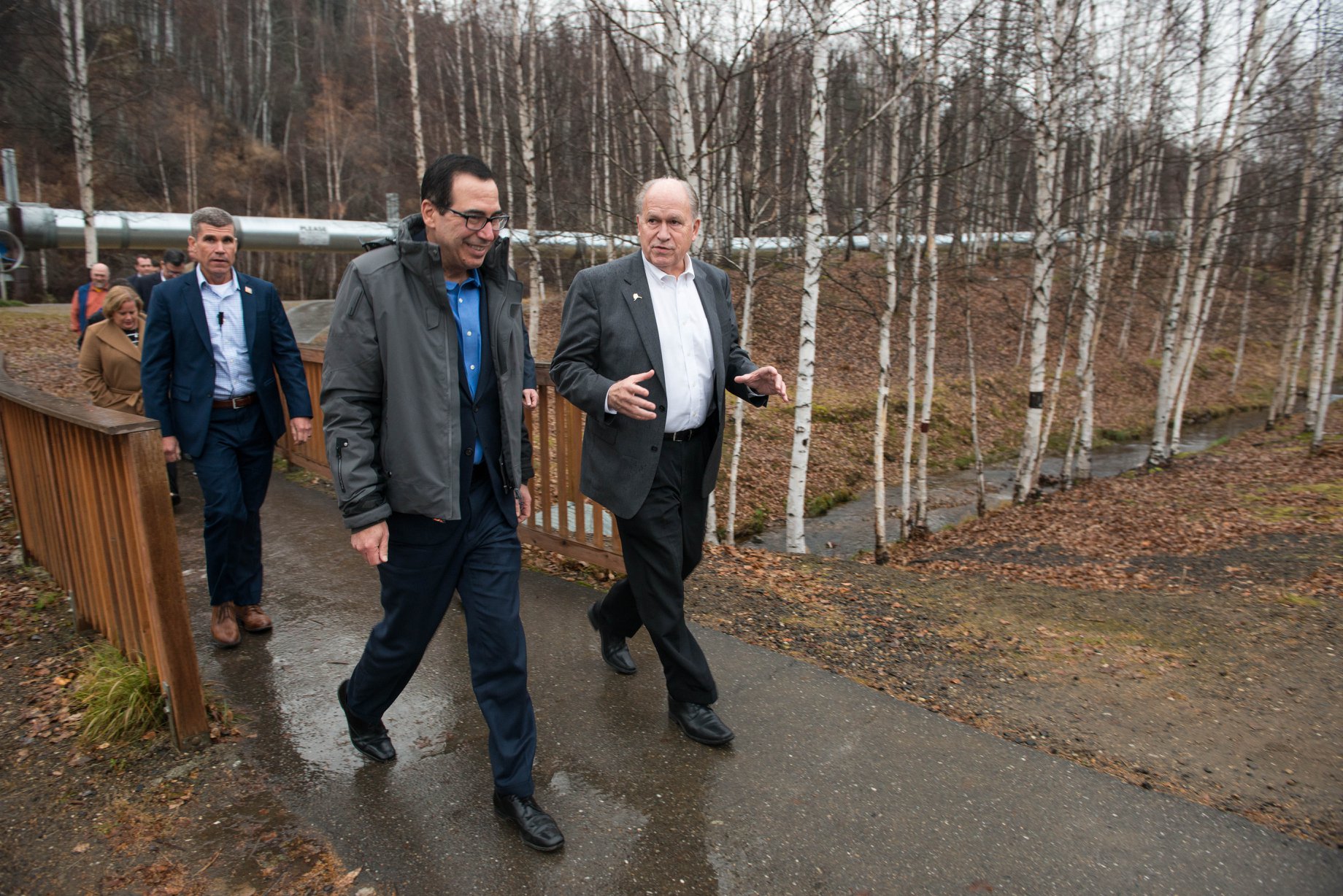In a crowded field of potential LNG suppliers to China, an Arctic Alaska project could still have some advantages
Projects in Western Canada and the Russian Arctic wouldn't necessarily compete with Alaska's pipeline and plant efforts, a project spokesman said.

A new project that will ship liquefied natural gas from British Columbia to China is set for construction and is one of many — including projects in Russia’s Yamal Peninsula —expected to serve that market. But Alaskans should not worry too much about being their project being displaced by the competition, said a spokesman for the Alaska Gasline Development Corp.
China and other Asian Pacific countries have “a rapidly growing demand” for natural gas that will require supplies from many sources, including Alaska, said AGDC spokesman Jesse Carlstrom. China, in particular, is pushing hard for natural gas to replace coal as part of a broader environmental policy, he said. China is already importing natural gas from Russia, Qatar, Australia and Louisiana, “but they need more,” he said. “There’s room for more. We don’t have to be the first to get to the market.”
Royal Dutch Shell’s British Columbia liquefied natural gas project is more complement to Alaska LNG than a rival, he argued. “It really showcases the advantages of sourcing LNG from western North America,” he said.
When it starts operating, the British Columbia project will be able to ship LNG to China in nine to 10 days, a relatively quick turnaround that takes advantage of geographic location and gives gas buyers — mostly utilities — timely supplies, he said. Alaska LNG would be supplied even more quickly, with a trip that would take seven to nine days, he said.
The British Columbia and Alaska projects have other common features, Carlstrom said. They are similar in size and scope — the Canadian project is expected to supply 14 million tons a year at startup, while the Alaskan project is expected to start off at 20 million tons a year, he said. Both require long pipelines from gas sources — a 400-mile line for the Canadian project versus an 800-mile line for the Alaska project, he said. Construction costs are comparable, at about $31 billion for the Canadian project and $43 billion for the Alaska project, he said.
But there is a key difference, Carlstrom said. Gas for the Canadian project would likely come from shale production and resources yet to be discovered, while the North Slope reserves that lie in operating oil fields are conventional gas with a supply already proven and well-known, he said. The stranded nature of Alaska’s North Slope natural gas also affords extra opportunities for adaptable contract terms, he said. “Alaska LNG’s obvious competitive advantage is our ability to provide price stability over a long period,” he said. That “can remove the volatility of the price because it’s a stranded resource with no other markets.”
Alaska’s project, according to plan, would ship natural gas from Prudhoe Bay on the Arctic coastline through a pipeline to a liquefaction plant at Cook Inlet in southern Alaska. The plan is one of a series offered since the 1970s for commercializing the vast stores of natural gas that are known to exist in North Slope oil fields. AGDC, a state agency, is the sponsor.
The Alaska project in recent weeks has won a series of written and verbal endorsements, including words of encouragement from a member of President Trump’s cabinet.
Earlier this month, Chinese institutions that pledged support for the project in late 2017 signed a new document reaffirming that support.
The Oct. 2 document was signed by China Petrochemical Corporation (Sinopec), CIC Capital Corporation (CIC Capital), and Bank of China, companies that would buy Alaska LNG or finance construction of the project.
The agreement, which maintains the end-of-2018 goal for striking more binding and definitive agreements, “reaffirms the willingness to establish LNG trade between Alaska and China for the mutual benefit of all parties,” AGDC President Keith Meyer said in a statement.
That document with the Chinese entities was followed on Oct. 13 by a memorandum of understanding signed by AGDC’s president and the presidents of several Alaska labor unions that seeks to give state residents advantage for employment building the project. The MOU is a precursor to what is expected to be detailed project labor agreements.
“The state is leading the charge on this project to give Alaskans control over our own destiny for such a valuable opportunity. This agreement puts Alaskans in the driver’s seat for filling the thousands of jobs that this project will create,” Gov. Bill Walker said in an AGDC statement released by AGDC.
Over the weekend, U.S. Treasury Secretary Steven Mnuchin visited Fairbanks and discussed the LNG project with Walker, Sen. Lisa Murkowski, union leaders and others
“In my meetings with Secretary Mnuchin, both in Washington and in Fairbanks, he has expressed strong support for the Alaska LNG Project,” Walker said in a statement. “He understands that this is America’s infrastructure project and that it represents a trillion-dollar opportunity.
Yereth Rosen is a 2018 Alicia Patterson Foundation fellow.